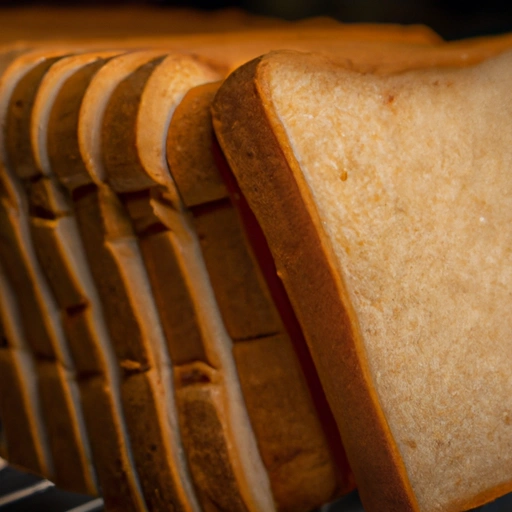White Bread
Description

White bread is a type of bread made from wheat flour from which the bran and the germ layers have been removed, leaving behind the starchy endosperm. This process results in a light-colored flour, which gives the bread its characteristic white appearance. White bread is known for its soft texture, mild flavor, and its ability to be used in a variety of culinary applications. It is commonly available in pre-sliced form, making it a convenient option for quick meals and sandwiches.
Common uses
White bread is frequently used as a base for sandwiches, as a side for soups and salads, and as a key ingredient in various recipes such as bread pudding, French toast, and stuffing. It also serves as an accessible food for making quick snacks like toast with butter or jam. In many cultures, white bread plays a vital role in traditional meals and comfort food dishes.
Nutritional value
Calories
A typical slice of white bread contains about 66 calories (275 kilojoules).
Protein
Each slice provides roughly 2 grams of protein (0.07 ounces).
Fat
White bread contains minimal fat, with an average of 1 gram per slice (0.035 ounces).
Carbohydrates
The majority of the calories in white bread come from carbohydrates, with each slice containing around 13 grams (0.46 ounces).
Vitamins
White bread is often enriched with vitamins, such as thiamin, riboflavin, niacin, and folic acid.
Minerals
The enrichment process also adds minerals like iron and calcium to white bread, enhancing its nutritional profile.
Health benefits
Enriched white bread can contribute to daily vitamin and mineral intake. The added iron helps to prevent anemia, while folic acid is important for pregnant women to support fetal development. However, white bread should be consumed in moderation as part of a balanced diet.
Potential risks
Consuming white bread in excess can lead to potential health risks such as weight gain and blood sugar spikes. The lack of fiber compared to whole-grain breads can also affect digestive health. Individuals with gluten intolerance or celiac disease should avoid white bread as it contains gluten.
Common recipes
White bread is used in a multitude of recipes, from classic American grilled cheese sandwiches to European bread-based desserts like Summer Pudding. It's also a staple ingredient in many stuffing and breadcrumb recipes.
Cooking methods
Besides being consumed fresh, white bread can be toasted, grilled, baked, or even fried to suit various recipes and taste preferences.
Pairing with other ingredients
White bread pairs well with both sweet and savory spreads, can be used as a base for pizza-like snacks, and complements egg dishes for breakfast or brunch. It is also commonly used for croutons in salads and soups.
Summary
White bread is a widely-consumed food that forms an integral part of many diets around the world. Its versatility and mild taste make it suitable for numerous culinary applications. While it provides certain nutritional benefits, particularly when enriched, it is best enjoyed as part of a varied and balanced diet, mindful of its lower fiber content and refined nature in comparison to whole-grain alternatives.